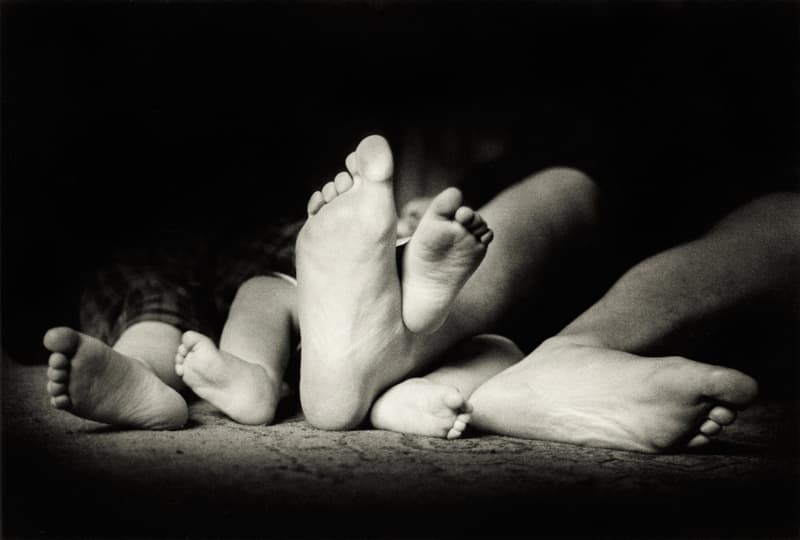Photo Insight with Andrew Sanderson

A renowned photographer, tutor, author and Ilford Master Printer, Andrew Sanderson offers practical tips on working with film and traditional darkroom techniques
In the 1990s, my wife and I had three children in quick succession. To share out the childcare duties, we each agreed to stay at home for three days a week and for us all to be together on Sundays. This meant that my wife could continue her career as an artist and I could pursue my photography.
The arrangement worked well, but it meant that I often couldn’t just go off wherever I wanted and take pictures all day as I’d been used to doing. Therefore, I made a conscious decision to photograph things in and around the home, rather than being frustrated that I couldn’t go out.
I found there was plenty of inspiration all around me and I started looking at everyday things with a fresh eye. This eventually resulted in a large body of work on all sorts of subjects around the house, including still-life shots, portraits and observations.
This photograph, called ‘Family Feet’, was taken around 14 years ago, before my youngest daughter was born. My wife, son and eldest daughter were lying on the floor, just larking about. My son was two years old and my eldest daughter was four. The kids were climbing over my wife and as I watched them I thought there might be a picture here – something to do with the very different sizes of their bare feet.
Initially, I asked them to all line up in a row with the children’s feet arranged either side of my wife’s, but when I looked through the lens I thought it looked too regular. So instead, I got them to jumble their feet up, which was visually more interesting, and the picture just came together.
I used a Pentax ME Super with a 50mm f/1.4 lens and Ilford HP5 film. I shot it with the aperture wide open.
My wife’s upright foot in the middle of the frame forms the centre of the composition and holds it all together. The other feet are not placed in a perfectly symmetrical way, but they splay out in a kind of fan shape with horizontal feet at either end.

The only problem I had when taking the picture was that we lived in a particularly dark old house at the time and there was only a limited amount of natural light coming from one window. I prefer natural daylight in most situations and rarely use artificial light. I might occasionally use a bit of tungsten light or even a torch, but I don’t use flash.
The soles of my family’s feet were facing the window and lying in a patch of natural light. As you can see, the rest of the room is quite dark and the illumination quickly falls away, along with focus.
For years I had been quite frugal with film and it’s always seemed unnecessary to shoot more than one shot of anything. I only shot one frame here and didn’t feel I could have done it any better.
I know other photographers shoot hundreds of images to get one final shot, but I’ve never gone down that route. I look at my contact sheets and everything’s different. Some of them work and some don’t, but the ones that work really jump out. It certainly makes editing a lot simpler!
The photograph might look as though I’ve burned in the foreground and background at the printing stage, but I did very little darkroom work. There was one distracting area in the background that was pale and out of focus, which I burned in, otherwise it’s pretty much a straight print from the negative.
This is a picture that works well in black & white and one that I don’t think would have been improved by shooting it in colour. The use of black & white has simplified the image and made it more graphic.
For me, photography – and particularly monochrome photography – is about shapes and tones within a delineated area, whether that’s a square or rectangle. It’s about shapes and the shapes around (or in between) those shapes. Once you realise that, and develop an eye for it, you can apply it to any area of photography.
The results of my period of photographing around the house were later published in my book, Home Photography: Inspiration on Your Doorstep. Like many of the pictures in the book, there’s no deep or hidden meaning to ‘Family Feet’; it’s just a spontaneous picture that worked well visually. I’ve often been lucky in that way.
For me, this image illustrates the idea that you don’t have to travel to far-flung, exotic locations to take interesting pictures. So long as you’re open to possibilities and know what to look for, you can find them all around.
Andrew Sanderson was talking to David Clark

If you would like to read more about paper negatives, Andrew’s book Paper Negative Photography is available from www.blurb.com, price £15







